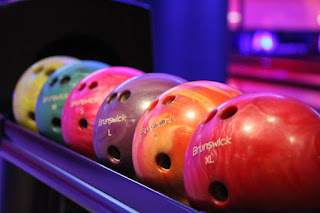The origin of the terms "turkey" and "hambone" for three consecutive strikes in bowling is not entirely clear, and there are several theories about their origins.
The term "turkey" is believed to have originated in the United States during the 18th or 19th century. One theory suggests that in the early days of bowling, it was common for groups of friends to play together. When a bowler achieved three consecutive strikes, they were so delighted that they would celebrate by sharing a meal together, often eating turkey. This tradition of celebrating three strikes with a turkey meal may have led to the term "turkey" being associated with three strikes in bowling.
As for the term "hambone," its origin is less well-documented and less widely known compared to "turkey." However, one theory proposes that it was coined by professional bowler Don Carter during a televised bowling event in the 1950s. Don Carter was known for his colorful and charismatic personality, and he used the term "hambone" to describe three strikes in a row during the broadcast. It's speculated that he might have chosen the word "hambone" simply because it sounded catchy and fun.
Another theory suggests that "hambone" originated from the slang term "ham" or "ham actor," which was used to describe someone who overacted or showed off for attention. The term "hambone" may have been used humorously to refer to a bowler who achieved three consecutive strikes and celebrated exuberantly, similar to an attention-seeking performer.
Over time, both "turkey" and "hambone" have become widely accepted bowling terms for three strikes in a row. These terms add a touch of lightheartedness and camaraderie to the game, and they are commonly used by bowlers and commentators to celebrate impressive bowling performances. While the exact origins of these terms may remain somewhat elusive, their usage in bowling culture has become firmly entrenched, contributing to the colorful and entertaining aspects of the sport.
Pixabay (free)

No comments:
Post a Comment
Thanks for your comment.